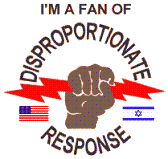A Sane Perspective on The Nuclear Problem in Japan
Several people have called asking for my perspective on the events in Japan; it seems appropriate that I share some written thoughts and perspectives. You can share this with others if you desire.First of all, it is important to keep an overall perspective on this situation. This is one of the most devastating natural disasters in our lifetimes. At last count, there were approximately 9000 people dead and 12,000 still missing. The remaining people are cold, hungry, and without power. Unfortunately, natural disasters tend to be high drama when they happen; the recovery garners less public interest. A nuclear accident, on the other hand, stays high drama for a long time. I don’t blame anyone for this – it is just basic human psychology, but it is important that we as rational people don’t allow our fear and ignorance to contribute to misdirection of concern.
Let me provide some perspective on engineering for disasters (this is one of the classes I teach at University of Idaho as well as at work). Power plants are some of the largest and most complicated systems of machines ever made. This is true for hydro-electric, coal, natural gas, nuclear, and geothermal plants alike – but even more so for nuclear power stations. (I don’t include wind farms and solar plants because they are only capable of producing very small amounts of electricity for short periods of time and won’t ever be a significant factor in meeting the world’s energy demand.)
It’s important to recognize that each of us uses more electricity today that our parents did and our parents use more than their parents did. We do this by choice. Every time we plug in a cell phone, iPad, computer, TV, etc, we place a demand on the electrical distribution system. This demand either has to be met or the electrical grid shut off. Since people don’t like blackouts (and since they are dangerous), electrical utility companies continue to add more generating capacity by building more power plants. This increase in demand has also kept many nuclear power stations on line beyond their design life spans.
When we design power plants, we have to establish a basis for how much force the plants can withstand and how long they need to last – fundamentally for how safe to make them. The safer we make them, the more expensive they are and the more everyone pays for their electricity. Consequently we do not design power plants to be as safe as they can be. We (engineers, companies, governments and society at large) accept a certain amount of risk as a tradeoff between the cost and the benefit of the plant.
We can understand the concept of risk as the mathematical product of the probability that a particular event will happen and the consequence of that event. Risk = Probability X Consequence. So something that isn’t very likely to happen, but produces a very negative result would get the same attention in the design as something that is very likely to happen but produces a relatively benign event.
There is risk in all forms of power generation.
Let me provide a few examples and then we’ll get back to Japan. In the last few years there have been several power plant accidents around the world. Last summer there was a major disaster at a hydroelectric plant in Russia. It killed 69 people. There was a natural gas explosion in Pennsylvania in 2009 that killed 5 people and another in 2010 at a power plant in Connecticut that killed 6 people. Coal fired power plants release more radioactivity and toxins to the environment than nuclear; in 2008, a coal plant in Tennessee leaked a billion gallons of toxic sludge and contaminated over 300 acres. Fatalities and damage to the environment happen in power plant accidents routinely and the events barely make the news – unless it happens at a nuclear plant.
The reactor accidents in Japan are bad. The economic cost of the cleanup is going to be staggering – in fact it is possible that this event will start the end of the commercial nuclear industry. However, the risk of anyone actually dying is very low. What this accident really shows is that a 40 year old nuclear power plant, that was not built to withstand a magnitude 8.9 earthquake and a 30 foot tsunami at the same time, is still a safer form of energy than coal, hydro, or natural gas. But somehow, if not a single person dies from this accident – an accident caused by a natural disaster so catastrophic that 20,000 people die from the disaster itself, we’ll walk away thinking we learned that nuclear is unsafe. We’ll get the wrong message because almost no one understands what is happening, the people who are doing their best to report on the events lack even basic understanding of the words they are using, and the rare people who do understand what is happening don’t have the communication skills to explain it.
OK, so what is happening in Japan? There are six boiling water nuclear reactors at the Fukushima Daiichi power station. Each of these plants is designed to pump distilled water into a reactor, boil the water, use the steam to turn a turbine (think of blowing on a pinwheel) to make electricity, cool the steam back into water and pump it back into the reactor where the process repeats over and over. When the fuel in the reactor becomes inefficient at producing heat it is moved to a storage pool and replaced with fresh fuel. The spent fuel will cool off over several years and become less radioactive until it can be removed from the pool and is either chemically reprocessed or stored in dry casks.
When the earthquake hit, the power station did what it was designed to do. It shut down. When the tsunami hit, the sea water flooded the area and shorted out the electrical distribution systems. With the reactor off and no ability to get power from another plant a nuclear reactor normally uses back up diesel generators to power the pumps that circulate the cooling water through the reactor and spent fuel pools. Unfortunately, the diesels were also damaged by the tsunami.
This left the reactors in a position to not be able to circulate cooling water, allowed a buildup of heat and hydrogen gas. (When water is in the presence of some forms of radiation it will separate into its constituent parts: hydrogen and oxygen. If the water cannot be circulated and the concentrations of hydrogen and oxygen gas built up, and some form of ignition occurs – say a spark or other heat source – the hydrogen and oxygen will recombine to form water again. This process releases energy – it is exothermic. ) This happened several times in the Fukushima plants and there were several hydrogen explosions that further damaged the buildings.
These events can be easily misunderstood when you hear about them in the news.
“An explosion occurred at an uncontrolled and overheating nuclear power station that is now leaking radiation” communicates a very different message than “A power station had a power outage and made some water” but they mean exactly the same thing. For the people who get to repair and clean up these plants, these are significant events; to the general public they are not. Let’s address the radiation part of the story and see why.Radiation comes in several types. Generally what is being discussed during this event is a type called gamma radiation so I’ll provide a little background on this one type. Gamma radiation is like sunlight. It is an energy wave. It can’t be blown by the wind or leak like water. Just like sunlight, too much is not good for us and increases the chance of getting cancer. Like sunlight, in the right quantities it is actually helpful. Gamma rays and x-rays are only distinguishable by where they originate. In other words, getting a dental x-ray is the same thing to your body as being exposed to radiation from a nuclear reactor. Every human on earth is exposed to gamma rays every day from birth to death. In fact, each of us is naturally radioactive – we are ourselves sources of radiation. This is because radioactivity (the characteristic of something that gives off radiation) is quite natural. Of all the elements in our bodies, one of them is potassium (K-40) which we get from potatoes, bananas, etc.
So how much is too much? Let me try to help with a perspective again. The biological effect of radiation exposure is measured (in our country) in units called ‘rem’. A typical person receives 0.3 rem a year from natural sources and about another 0.1 rem from consumer products and medical procedures. By law, a person in the nuclear industry can receive about ten times more than that - up to 5 rem a year . This is safe, but the nuclear industry also works to keep radiation exposure as low as they reasonably can. For instance, in my entire career I’ve received a cumulative dose of 0.25 rem. If you fly on an airplane, you are closer to the sun so you receive more radiation – about 0.1 rem per 1000 miles of flight. A lethal dose of radiation of radiation is approximately 500 rem in a single dose or about 100 times the legal limit.
So when you hear about “abnormal radiation levels” or “radiation leaking” etc you have to keep it in perspective. People who get on planes to fly away from Japan will likely receive more radiation from flying than if they had stayed in Japan in the first place. I know radiation is scary to people, because it can’t be perceived by our senses and become of all the myths we’ve been exposed to. A radiation level that is “100 times greater than normal” doesn’t necessarily mean anything scary at all – if “normal” is a low number – which it usually is. For instance, if a typical radiation exposure rate outside a nuclear reactor is 0.001 rem per hour and it’s a now “a hundred times” above normal it would now be 0.1 rem per hour. You could sit there for two or three hours and get the same dose you’d get flying across country without even being concerned.
I know there are people getting worried about radiation exposure on the west coast of the US, so let me try another perspective. I work for the navy. When we got word of the events in Japan, we sent one of our nuclear powered aircraft carriers, the USS Ronald Reagan, straight through the radioactive plume to Japan to provide humanitarian support. We voluntarily sucked up the radioactivity into the ventilation system, cleaned it up and are still there trying to help the people of Japan. Some of the people who know the most about this stuff are voluntarily going right into it to help. The radiation levels in the Fukushima plant are dangerous to people inside the plant, but they know this and are trained to deal with the risks (the highest cumulative dose I’ve read about to any of the workers is 10 rem or about 50 times lower than a lethal dose).
If you wanted to limit your exposure to sunlight, you’d restrict your time in the sun, move to a place where there is less sunlight and wear clothing that covers your body when you do have to be in the sun. In radiation protection language we call this time, distance, and shielding. The same principles of time, distance, and shielding apply to this situation. For instance, since California is about 5000 miles away from Japan even a lethal dose in Japan would likely be unmeasureable in the United States. (If you want the math it goes like this: Let’s say the radiation level a mile away from Fukushima was outrageously high – say 500 rem/hr. What is the radiation level in California – 5000 miles away? It would be 500(12/50002) or 0.00002 rem/hr –which is too low to measure.)
I understand people’s concerns but I’d advise you to stay away from the news, if you can. The poor reporters are just not equipped to be able to explain this event. They consistently say things that aren’t true because they don’t understand the words they are using. They are also scared themselves. If you do feel the need to follow the events, the IAEA website isn’t bad: http://iaea.org/newscenter/news/tsunamiupdate01.html
Let me summarize a few things. The reactor accident in Japan is the result of a natural disaster that was worse than what the plant was designed to withstand. It’s a bad accident and is going to be wildly expensive to clean up (cost has always been the problem with nuclear). I don’t expect anyone to die from the events going on in the power plant; I don’t believe there is any significant risk to people anywhere, but especially not outside the plant itself; I believe our focus, concern, and attention as a society should be placed on supporting the victims of the natural disaster; Since I have the skills and knowledge to actually help with the nuclear end of the crisis, I am volunteering to go and help. I don’t suspect the Navy will take me up on my offer, (we have a team there already) but if I can go I will.















|